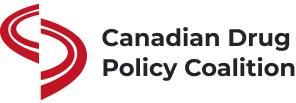Police communications about drug seizures vary widely in their accuracy. These statements rarely share specific evidence or data sources and sometimes contain errors or overstatements, as in the recent case in Belleville, Ontario and emerging information on Prince George. Police announcing large seizures of prescribed alternatives to the unregulated drug supply as Prince George RCMP did this month may drive fear and influence policy, even if based primarily on assumption. Without forensic testing, police may base their conclusions on visual assessments of shape, size, colour and packaging. Many of these visual clues can be closely copied by producers of counterfeit pills.
Most hydromorphone is prescribed for pain management, not as safe supply. If police do not have evidence of the reasons seized medications were prescribed, it is irresponsible for them to speculate. If police have demonstrable proof that drug seizures include prescription medications, they should refer to them as such, rather than guess or assume they are prescribed safer supply.
We know a few things for certain:
- There is always some possibility that people will re-sell or give away their medications, no matter the reason they are prescribed. The sale of prescription drugs on the illicit market is not a new phenomenon. We also know that prescribed alternatives account for only 14 per cent of hydromorphone prescribed in the province of BC – the vast majority of hydromorphone prescriptions are for pain management.
- We have zero doubts as to what continues to kill thousands of people across the country, and it is not prescription medications. Unregulated illicit drugs are driving deaths. Rates of drug use across Canada have remained stable over the past decade, while drug deaths have skyrocketed. The unregulated drug supply has become drastically more toxic and more dangerous.
- According to Health Canada, of all accidental apparent opioid toxicity deaths from January to June 2023, 80 per cent involved opioids that were only non-pharmaceutical. Data from the BC Coroners Service shows no indication prescribed alternatives are driving deaths. Hydromorphone was detected in three per cent of expedited toxicological testing in 2023, whereas illicit fentanyl was present in 85 per cent of such tests.
- We know counterfeit prescription pills are manufactured and sold on the illicit market. These drugs are unregulated and can be dangerous, in part because they may be seen as lower risk. It is unclear whether or to what extent police test seized drugs to determine their actual contents before making public statements, versus assuming their source and contents based on appearance or other clues.
- Police claim by removing illicit drugs from the streets, they save lives. But growing evidence shows drug busts are associated with higher fatal overdose rates.
It is useful to understand why and to what extent prescription drugs make their way into the illicit drug market. We must navigate that reality, both to support people and communities and to ensure prescribed alternatives are effective in reducing the harms of unregulated drugs. But if we seek to stop mass drug toxicity deaths, fixating on prescription drugs misses the point.
We cannot lump all substances together. Prescription medications have the potential to be harmful, but they do not kill 22 people every day in Canada. It is unregulated illicit drugs that are killing people. We rely on police to share accurate information about public safety. Stoking public misunderstanding and fear about prescribed alternatives – a potentially lifesaving intervention with the support of the Provincial Health Officer, the BC Coroner’s Office, the BC Coroner’s Expert Death Review panel, a range of health professionals, policymakers, public health experts, researchers, and yes, even a range of police services – is an irresponsible distraction.


Leave a Reply